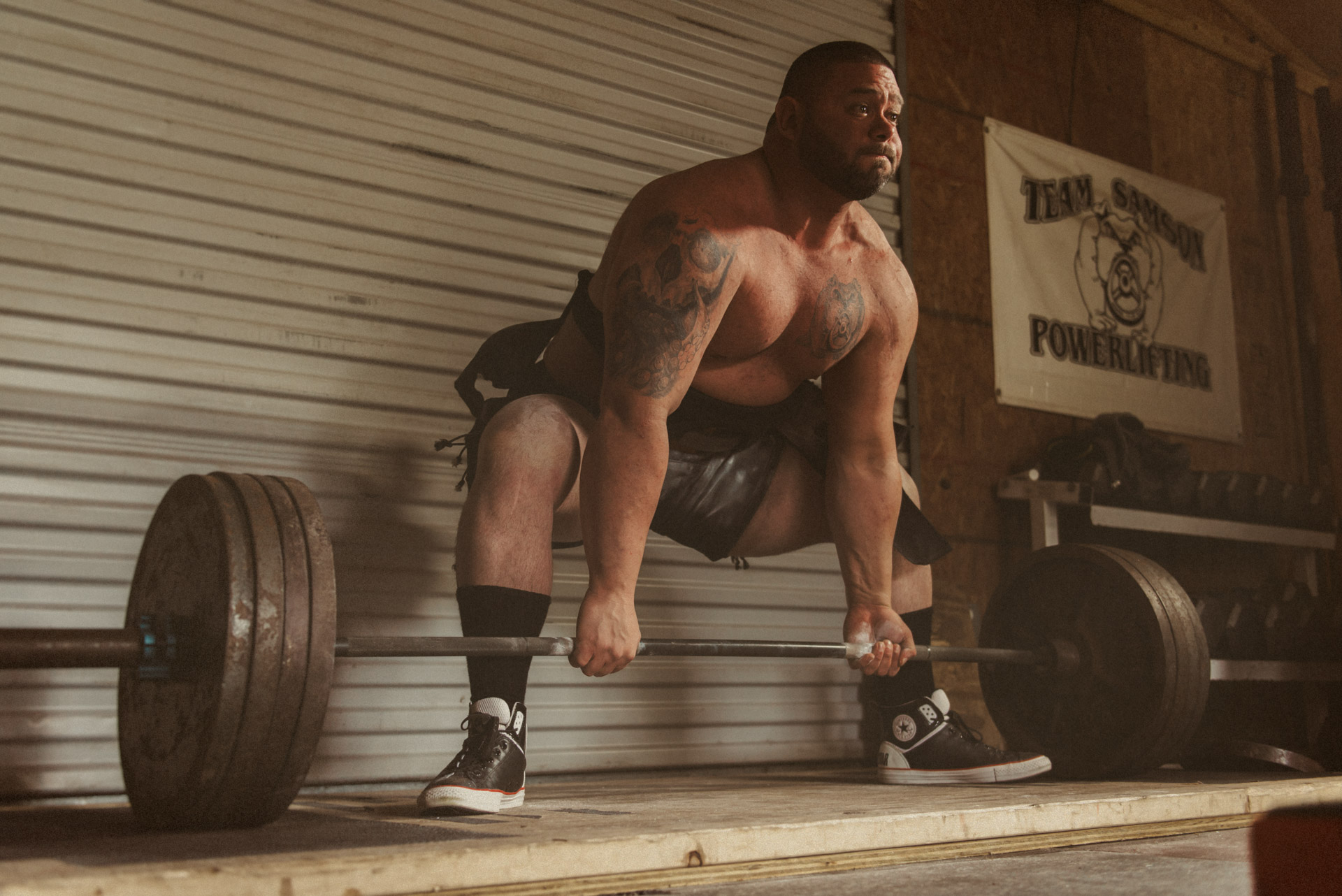
31 May The Sumo Deadlift: Tips and Coaching Cues
By Jonathan Byrd
The deadlift, specifically the sumo deadlift, is arguably is one of the most technical lifts out there. When coaching the lift, I try to keep it as simple and as efficient as possible. Below, I have put together a few coaching points to help beginner lifters better grasp the movement.
Bar alignment
When approaching the bar for a sumo stance the bar should be as close to the shin as possible. This will often mean it starts pressed up against your leg, and that is a good starting position.
Foot Placement
Your foot placement will be determined by multiple factors, but I suggest that you start with your feet slightly outside shoulder width. Those who are more flexible may have the ability to go much wider than this. The important thing to keep in mind is that wider may not always be better. If you force your legs out too wide, you can take away proper positioning, forcing your sumo deadlift to turn into a straight leg deadlift. While the angle of the foot can always be debated, for most people it should be simple and natural to find.
If you start with your feet straight forward at aligned at 90 degrees with the plates, your knees will often cave in, or shoot forward as you are reaching for the bar. There will be very little power there, which will make the lift very hard and could lead you towards injury. Most lifters should start with their foot angle at about 45 degrees with the bar. This will allow for your knees to be out and your power to travel up the leg effectively.
Grip
Be sure to get the bar deep into the palm of your hand, and keep it griped tight. You can close off your hand by wrapping your thumb around your fingers. There are other alternatives to the over under grip, such as the double over hand and the hook grip. These are not as common because as weights increase, those forms of grip will be difficult to maintain.
Lifter’s Wedge
Your back position should follow the natural curvature of your spine. In other words you should have a “flat back” initially, but it will change slightly later. As your hands are on the bar, work on pulling your shoulders back and down, so that the bar stays tight to your legs and your chest comes “up”.
By pulling your shoulders back and down, you will bring your chest up naturally and create a small arch in your back. You should not be trying to arch your back, but by pulling your shoulders back and your chest up it will happen naturally. We often refer to this as the “lifter’s wedge”.
The Pull
Once you are in the correct position it is time to actually perform the lift. The bar starts to move by driving your legs, think of driving your legs into the floor. You should be pulling the bar both up and into your body at the same time. Your arms should be locked and remain that way.
Do not “jerk” or “snatch” the bar off the floor. If your arms are bent as you pick the weight up, odds are you are trying to jerk it off the floor and this can result in injury.
Once the bar leaves the floor, it is important to keep your head behind the bar. If your head drifts forward, it will often result in losing the lifter’s wedge and the bar drifting out. This will force you to come up onto your toes, rather than driving with your heels, or a bad rounding of the back.
At this point if you are still in the proper position, you should be able to engage the glutes. Once the bar is at knee level, you have to push the hips forward while continuing to try and lock your legs. Attempt to squeeze your glutes as tight as possible and it will help you push through. Be sure not to over exaggerate the lift by leaning back too drastically. If you do this it will often result in the knees coming unlocked and you being called for a “soft lockout.”
One last coaching tip for the sumo deadlift
When doing multiple repetitions, do not bounce the weight off the floor. Reset, pull yourself back down, and follow your coaching cues again. You do not necessarily have to take your hands off the bar, but resetting each rep will make you stronger in the long run and keep your form solid. Consistency of effort is key.
Although a more technical lift than a conventional pull, don’t be quick to write off the sumo deadlift. There aren’t any components that make a person better at conventional, or sumo pulls. A little work on set up and following the above coaching ques can help you become a more efficient sumo puller.
Jonathan Byrd
Latest posts by Jonathan Byrd (see all)
- Byrd: DAC and some lifting! - May 21, 2018
- Byrd: I Still Lift - May 7, 2018
- Client Spotlight: Jenna Rowe - April 27, 2018








Sorry, the comment form is closed at this time.